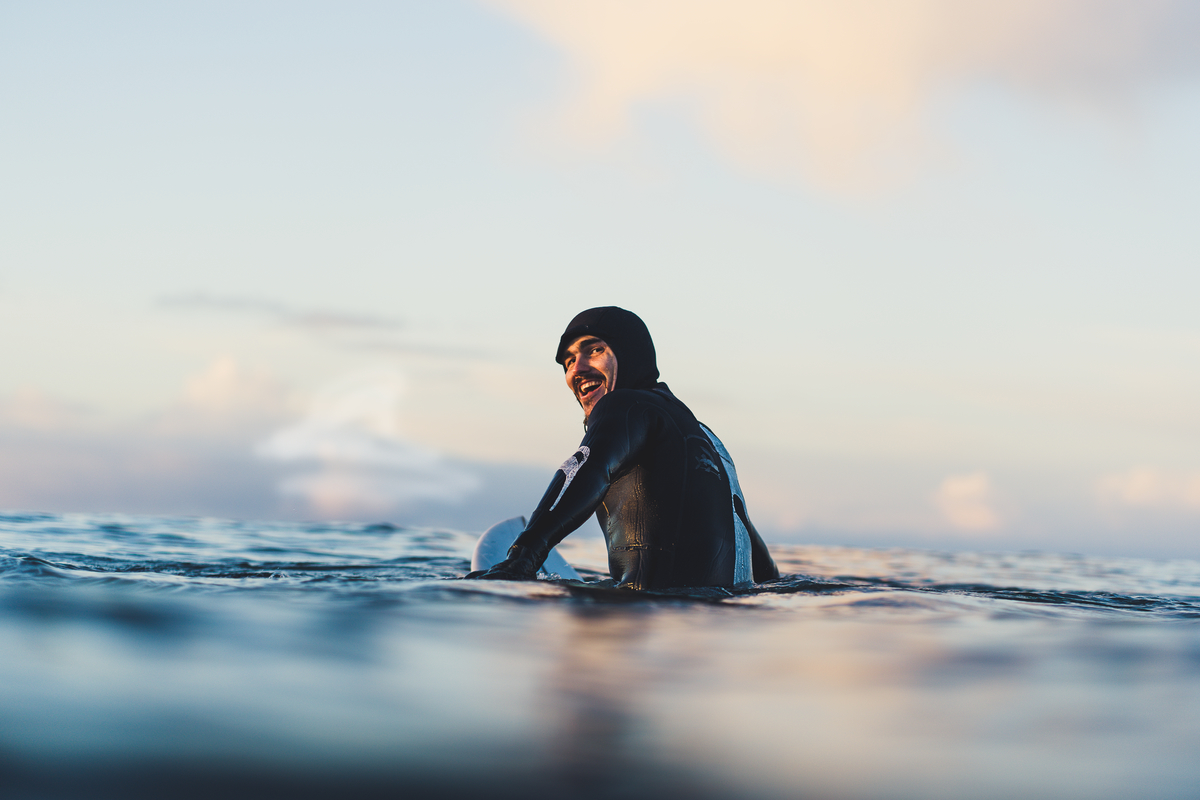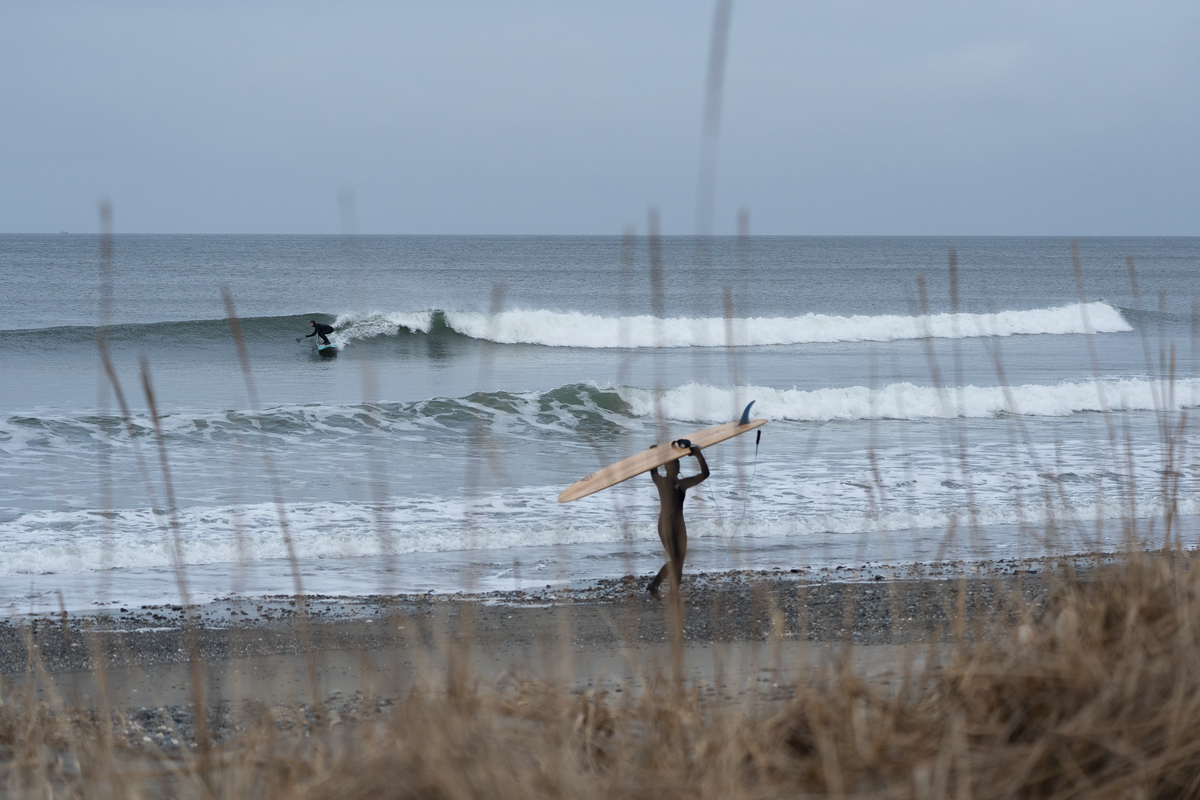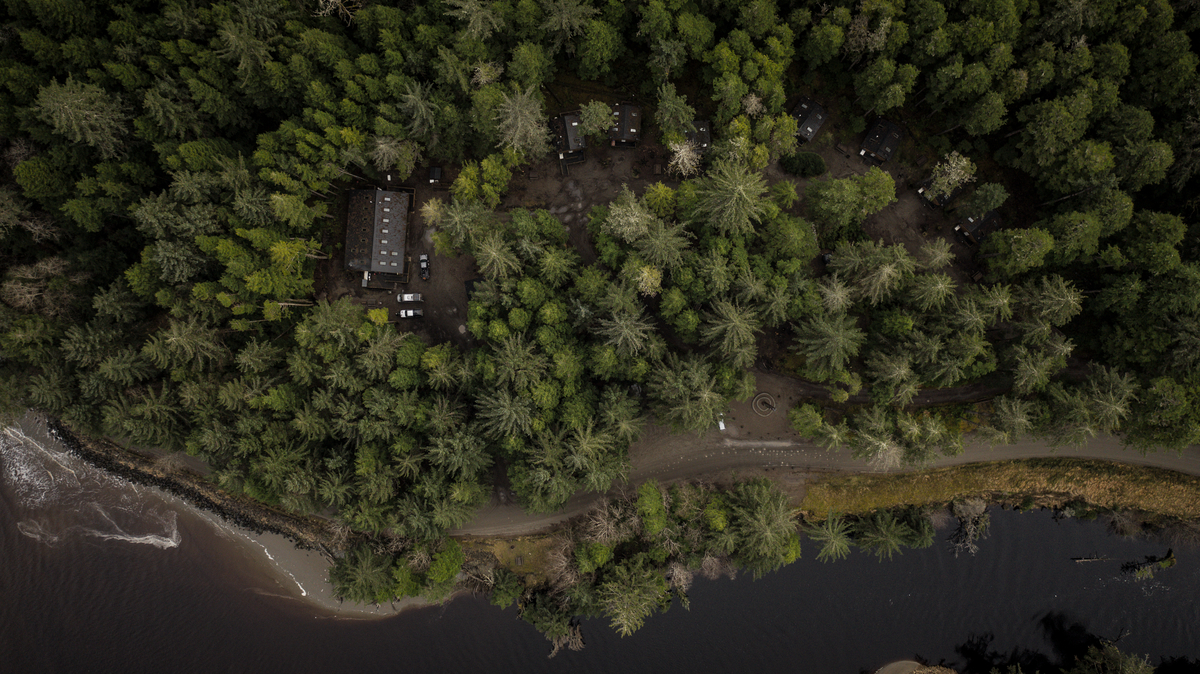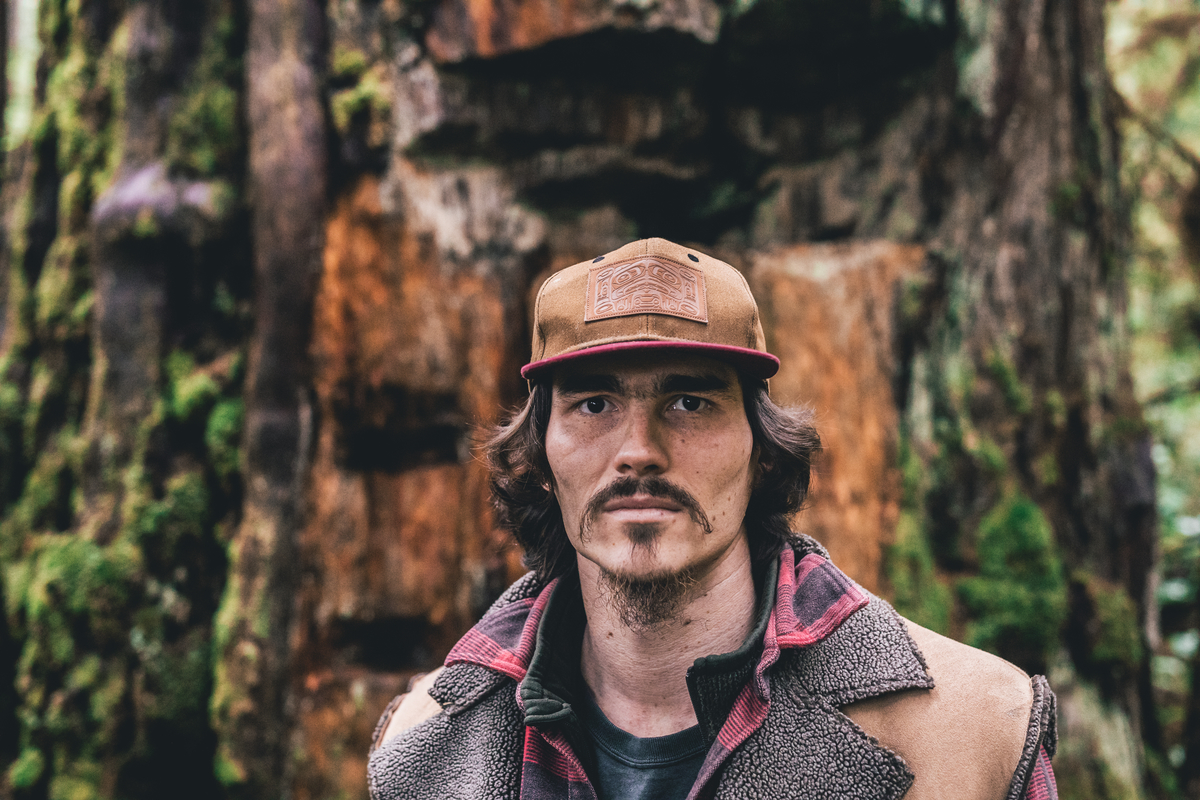Haida Gwaii (or Xaayda Gwaay, in Haida language) is comprised of over 150 islands, most of them small, and the majority of the territory is made up by Graham Island (Kiis Gwaay) to the north and Morseby Island (Gwaii Haanas) to the south. The west and windward side of the islands acts as the gateway to the mighty Pacific, and its jagged coastline is chiseled from decades of inclement weather and ferocious storm swells bearing down upon it. Access to that portion of coast is nearly impossible over land, and travel is done almost exclusively by sea. This poses many a challenge in the realm of hunting for surf along Haida Gwaii’s west coast, and has left the region mostly untouched and unexplored by visiting surfers because of the difficulty and dangers of operating a boat in such conditions.

This story (originally published in January 2020) was updated in 2021.
Gwaliga Hart stands alone on a windswept sand dune above the high tide line, surveying the surf conditions before paddling out. Two stretches of beach parallel eachother for several kilometres, and extend in a long sandy finger pointing northwards, separated by yellowed weather-beaten grass atop the dune, sprawling into the distance, then eventually falling away into the Pacific Ocean. Next stop, Alaska.
Though splitting his youth between Haida Gwaii and Vancouver, Gwaliga has been surfing this beach since he was a boy, and has become somewhat of a godfather of the Haida Gwaii surf community.
He dons a wetsuit with customized artwork that he added himself. “I designed it to represent the skin of a Wasco, a supernatural being and one of my clan crests” he says. “ We have many stories where different beings or Supernaturals have been skinned, whereupon the person puts the skin on and is able to take on the being’s powers and do extraordinary feats. It is a way to both show my identity and pay my respects to the Supernaturals.” Gwaliga grabs his board and starts towards the water’s edge, eager to ride a few of the beautiful offshore peaks before him, in solitude.
North Beach, Naikoon Provincial Park | John Scarth, Naikoon Provincial Park | John Scarth, Gwaliga Hart | Marcus Paladino
The islands of Haida Gwaii sometimes seem as though you’ve stepped into a time machine, portraying a likeness of existence from centuries ago. There is a certain mystique to the land. To wander through the old-growth rainforests that blanket its surface is to feel a connection to the power, wonder, and tradition woven through Haida Gwaii’s rich history. The natural beauty it holds is truly second to none, and spending time entranced in the forests and roaming deserted beaches, hearing nothing but the rhythmic beats of a Pacific Ocean drum, or the deep, throaty caws from ravens overhead, instils a sense of peace and calm. This is something that the Haida people have worked long and hard to keep preserved and intact. “It’s important to understand the significance of why things are the way they are here,” speaks Hart, “It’s easy to see the unspoiled remoteness and beauty of Haida Gwaii as ‘untouched wilderness,’ but in reality our land and marine environments are cultured landscapes, where we have occupied them for thousands of years. It’s no accident that we have vast unspoiled areas around Haida Gwaii that haven’t been ruined by industrial practices and the onslaught and exploitation of outside capitalistic ventures.”
The Haida have long been renowned for their artwork, including carving and woodworking, and they posses a great legacy as seafaring people. Large, ocean going canoes are carved out of a single giant cedar tree, which was used historically to transport ample numbers (as many as 50 or 60 in one canoe) up and down the Pacific coast.
These traditions have held true through many generations, and today, Haida residents like Gwaliga continue to practice and perfect such crafts. “There’s so much more to our art than just creating aesthetically pleasing pieces to look at,” says Hart. “They are representations of our Supernaturals, and intricate narratives that display personal identities and greater histories of our people.”
The Haida language (Xaad Kil) has a vast amount of terminology that references people being on the water, depicting different wind and weather patterns and wave conditions that are directly in relation to surfing. “Surfing, or riding waves, on Haida Gwaii means a lot to me,” says Gwaliga. “It’s been a way that I’ve been able to further connect with our long legacy, culture, and traditions of being on the water here. We have a great legacy of creating watercraft, from the canoe days and into recent times. Hull design elements from our canoes were added into commercial fishing boats, and nowadays, into surfboards, and personal paddling and planing hulls as well”.
Shaped by Water in Haida Gwaii
Back on the dune in the light of the sinking sun, Gwaliga has finished surfing, and his neoprene Wasco skin likeness has been traded for warmer and dryer clothing. His face turns up in a grin against the blustery offshore wind, as he strolls through the long grass. Although the spit is empty on this occasion, more and more surfers and travellers are venturing here in search of surf and solitude amidst its marvellous beauty. “As a surfer exploring spots around our islands, it’s important to know that every place has a Haida name, and many areas are protected and aren’t open for the general public” Gwaliga says, in reference to the mounting popularity. “And one should always inquire about the protocols around these areas before visiting them.”
It’s easy to get caught up in the excitement of visiting a place like this, looking for waves and forgetting about such things. Hart’s words serve as a healthy reminder for any visitors, surfer or otherwise, to learn and understand the history of Xaayda Gwaay before immersing themselves in its people and their land.
Plan Your Fall Getaway

See what's happening now with these recent posts.





